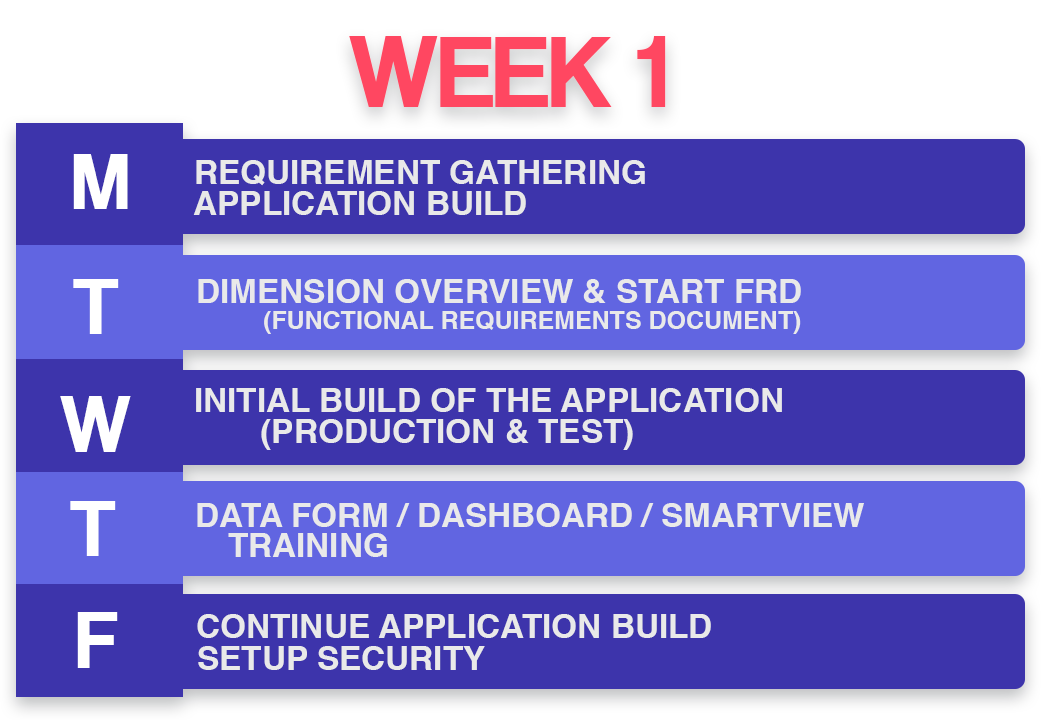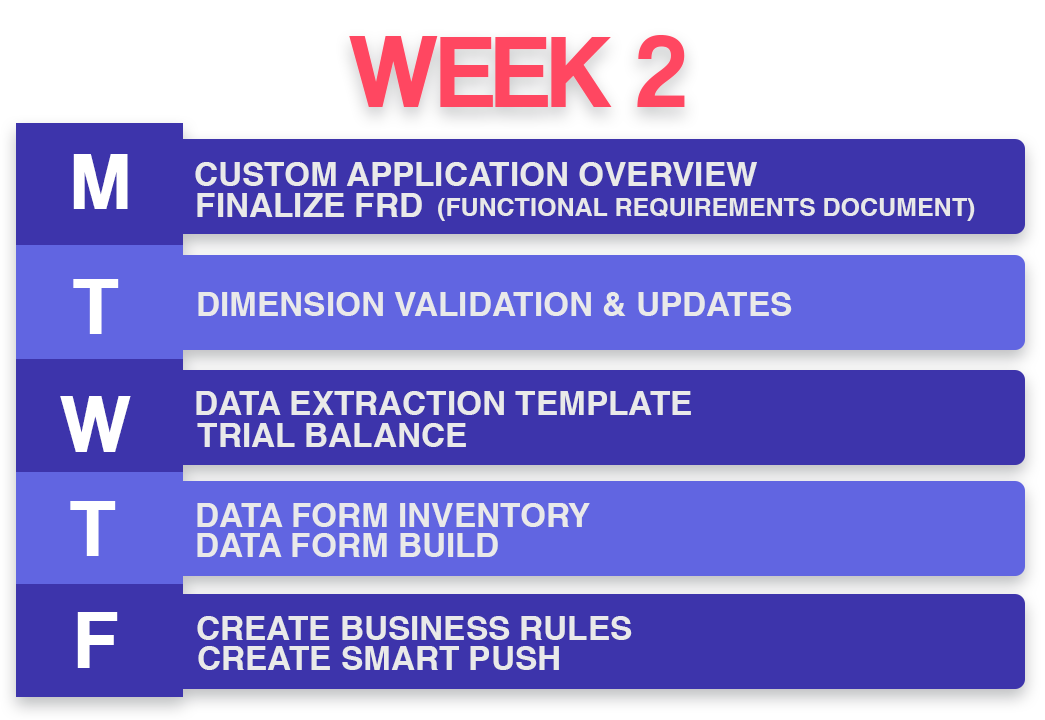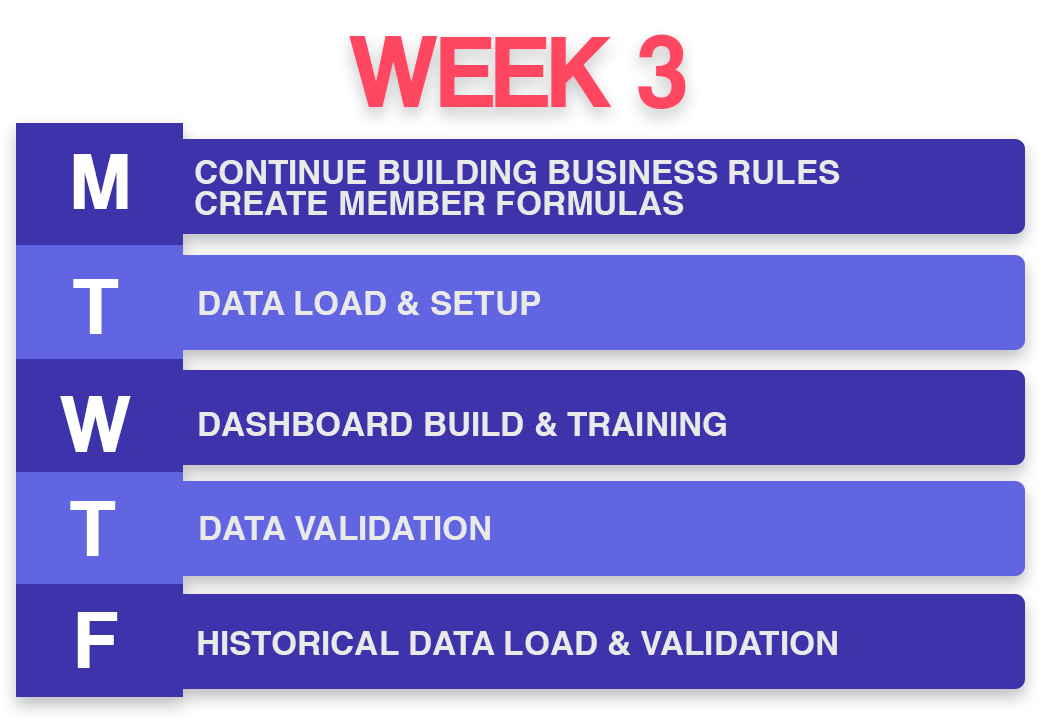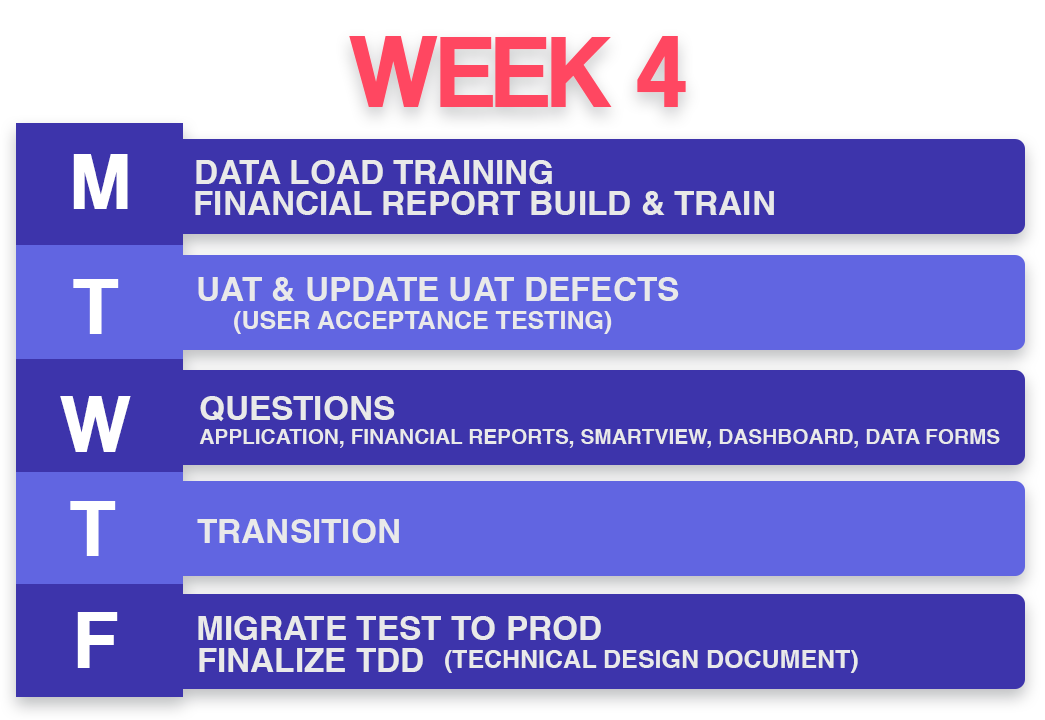
The initial first week of implementation will focus mainly on requirement gathering and initial application building. This is when our consultants will discuss with subject matter experts (SMEs) and gather information for the design of the application.
We will also configure the application for test and production, as well as configure security settings or grant access to users (so they may view the application and offer insight as we start building).
We will keep the end users engaged starting from week 1 all the way to week 4. This way, once training and user acceptance testing (UAT) begins, end users will not be surprised or shocked.


